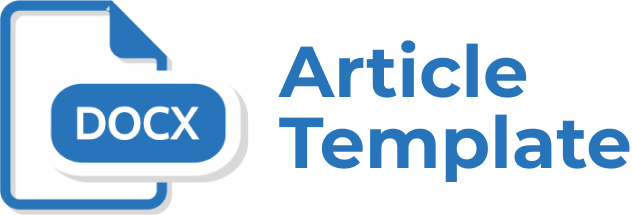Experiential Learning Model In Writing Learning for Students of Primary Teacher Education
Abstract
The purposes of this study were (1) to describe the use of Experiential-Based Learning Model; (2) to improve students' writing competence of Primary Teacher Education through the use of Experiential Based Learning models. This research method used collaborative action research. The subjects were students of Primary Teacher Education Kebumen. The technique of data collection used test writing assignment. Analysis of the data is used is qualitative analysis items, namely (1) data reduction, (2) display / presentation of the data, and (3) conclusion / verification. The Conclusions Showed that (1) Experiential-Based Learning Model that can improve the writing competence of students is Carried out through some steps: (a) search of concrete experiences, (b) reflection observation, (c) abstract conceptualization, and (d) an active experiment; (2) the use of Experiential Based Learning models can improve students' writing competence of Primary Teacher Education.
Keywords: experiential-based learning, writing competence
Full Text:
PDFReferences
Arikunto, S., (2000), Manajemen Penelitian, Rineka Cipta Jakarta.
Carver, R. (2008), Theory for Practice: A Framework for Thinking About Experiential Education. Philosophical Foundations,Theory & Practice of Experiential, hlm. 149-158.
Harrero, A.H, (2007), Journals: A Tool To Improve Students’ Writing Skills, Revista Electrónica, Volume 7, Numberr 1, April 2007, hlm. 1-37.
Hywel, J, (2003), The Language Skills, (4th Ed Block A), Sigma Press. Allama Iqbal Open University Islamabad, Rawalpindi.
Javed, M., Juan, W.X., & Nazli, S, (2013), AStudy of Students’ Assessment in Writing Skills of the English Language, International Journal of Instruction, July 2013, Vol.6, No.2, p. 129-144.
Kasbolah, K, (2001), Penelitian Tindakan Kelas, Penerbit Universitas Negeri Malang,Malang.
Kemmis, S. & Mc Taggart, R, (1990), The Action Research Planner, Third Edition, Deakin University,Victoria.
Kisiel, J. F, (2003), Teachers, museums and worksheets: A closerlook at a learning experience, Journal of Science TeacherEducation, 14(1), 3-21.
Kolb, A. Y., & Kolb, D. A, (2005), Learning styles and learningspaces: Enhancing experiential learning in higher education.Academy of Management Learning & Education, 4, 193-212.
Marcus, A, (2008), Rethinking museums’ adult education forK-12 teachers, Journal of Museum Education, 33, 55-78.
McCarthy, M, (2010), Experiential Learning Theory: From Theory To Practice. Journal of Business & Economics Research – May, 2010 Volume 8, Number 5 131. McGlinn, J. M. (2003), The impact of experiential learningon student teachers. The Clearing House, 76(3), 143-147.
Miettinen, R, (2000), The concept of experiential learning and John Dewey's theory of Reflective Thought And Action, International Journal Of Lifelong Education, Vol. 19, No. 1 (January - February 2000), University Of Helsinki, Finland, p. 54 -72.
Milles, M.B. & Huberman, A.M, (1992), Qualitative Data Analysis, Sage Publisher, Baverly Hills.
Moleong, LJ, (1989), Metodologi Penelitian Kualitatif,Remaja Karya. Bandung.
Mollaei,F. & Rahnama,H, (2012), Experiential Education Contributing to Language Learning, International Journal of Humanities and Social Science, Vol. 2 No. 21; November 2012. hlm. 268-279.
Moore,C.M.D && Joseph, N.M, (2016), Out of the Classroom and Into the City:The Use of Field Trips as an ExperientialLearning Tool in Teacher Education. SAGE Open. April-June 2016, p. 1–13.
Nadelson, L. S., & Jordan, J. R, (2012), Student attitudes towardand recall of outside day: An environmental science field trip,The Journal of Educational Research, 105, 220-231.
O'Toole, K, (2007), Assessment in Experiential Learning: The case ofapublicpolicy internship, Education Research and Perspectives Vol.34, No.2, 2007, hlm. 51-62.
Purnami, R.S. dan Rohayati, (2013), Implementasi Metode Experiential Learning dalam Pengembangan Softskills Mahasiswa yang Menunjang Integrasi Teknologi, Manajemen dan Bisnis, Jurnal Penelitian Pendidikan, Vol. 14 No. 1, April 2013, hlm. 97-103.
Rahmiati, (2014), Problematika Mahasiswa Dalam Menulis Karya Ilmiah, Jurnal Al Hikmah Vol. XV Nomor 1/2014, hlm. 90-105.
Shahid, S. M, (1999), Teaching of English, Majeed Book Depot, Lahore.
Simmons, S. R, (2006), “A Moving Force”:A Memoir of Experiential Learning, Journal of Natural Resources and Life Sciences Education, Vol.35, p. 132-139.
Smart, K.L. & Csapo, N, (2007), Learning by doing: Engaging students through learner-centered activities. Business Communication Quarterly, 70(4), 451-457.
Turner, K.H, (2012), Competency vs. Achievement: Why Connections are Important in Writing Teacher Education.Teaching/Writing: The Journal of Writing Teacher Education, Inaugural Issue (Spring 2012),hlm. 1-23.
Undang-undang Nomor 14 Tahun 2005 tentang Guru dan Dosen. Wilcox, B. L,(2002), Thinking and Writing for Publication. International Reading Association, New York.
Refbacks
- There are currently no refbacks.


